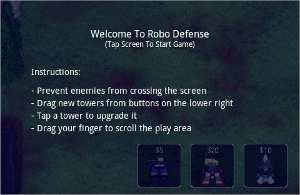Nowadays smartphones are not just about communication, equipped with apps they can also help you cook! Here are some of the best cooking apps for Android devices:
Sweet ‘n’ spicy
This application has one of the largest collections of Indian recipes courtesy byfullmeals.com. It has a total of over 4,000 recipes spread across three major categories: vegetarian, non-vegetarian and non-dairy vegetarian. It also has a calorie calculator.
The best part is that you can comment on recipes, and your comments can be viewed by other users. This can be your own recipe or a tip or comment on the existing ones.
Each recipe has the list of ingredients required to make it, preparation instructions and user comments. You can search for recipes by name, and save your favourite recipes so that you don’t have to search for them again.
 There is also a “My Kitchen” feature which helps you find recipes for the ingredients you have – you can put at the most three ingredients in a basket and then click on search to find the recipes that they can be used for. Recently used ingredients are also listed for ease of use
There is also a “My Kitchen” feature which helps you find recipes for the ingredients you have – you can put at the most three ingredients in a basket and then click on search to find the recipes that they can be used for. Recently used ingredients are also listed for ease of use
The application is available free of cost.
Mario Batali Cooks!
This is the official Android App of Mario Batali, a celebrity American chef of Italian descent. All the content in this application has been created by the chef himself. It features 63 most requested recipes from the many regions of Italy, each with its own video and still images made exclusively for the app.
You can browse recipes by region, course, prep-time, season, category of food, or kid-friendliness. The app has over five hours of video showing Mario cooking all 63 recipes, plus 25 more technique and kitchen-basics videos. There are still images also that accompany every step of each recipe.
The app’s bookmarking feature lets users cook more than one recipe at a time and jump quickly to favourites. There is also a built in timer for recipes.
 The app gives food and wine pairing tips, along with Mario’s notes about them.
The app gives food and wine pairing tips, along with Mario’s notes about them.
The best part is that the app gives you fully automated, multi-view, one-click shopping lists that you can check off at the grocery store. An extensive glossary of terms has been included in the app, just in case you don’t understand any words used in the recipe.
The app can be integrated with your Facebook account so that you can share your cooking stories via the web.
Mario Batalia’s app is priced at Rs 225, but then it’s better than buying a recipe book, which doesn’t have video and is never updated.
Allrecipes.com Dinner Spinner
The app contains over 40,000 user-submitted recipes from Allrecipes.com, including more than 500 Indian dishes. Each recipe features photos and reviews from the website’s community of millions of home cooks.
You will also find time-saving recipe tips from Allrecipes.com members and their ideas for recipe variations as well.
There are several categories to choose from, including appetizers, drinks, main dishes, side dishes, and desserts. You can also choose by ingredient, search for what you have on hand or what you are looking to buy.
 If you are short of time you can also search recipes according to the time it takes to make them. You will get options for recipes that cook in under 20 minutes to all-day slow cooking dishes.
If you are short of time you can also search recipes according to the time it takes to make them. You will get options for recipes that cook in under 20 minutes to all-day slow cooking dishes.
If you are not sure what you’re looking for, just shake the phone or hit “spin” to get a random selection of dishes and ingredients.
What’s more, you can share your favourite recipes with friends through Facebook, Twitter, or email.
If you are a good cook many people will be happy if you share your own recipes through this app.
The application is free.
KnowledgeBook: Cooking
This is a cooking app with absolutely no recipes. Instead, it contains all the little bits of information and rules of thumb that you need in the kitchen.
It has answers to questions like: what can be substituted for buttermilk or baking soda in a pinch; how many bananas does it take to make 1 cup of slices; how many cups make a pint; what temperature should an oven be set to if the recipe calls for a “moderately hot” oven, etc.
 With sections like yields and equivalents, substitutions, general cooking terms, measurement conversions, and high-altitude considerations, the application aims to be a one-stop reference for all the extra information needed to help you understand your recipes and to get cooking!
With sections like yields and equivalents, substitutions, general cooking terms, measurement conversions, and high-altitude considerations, the application aims to be a one-stop reference for all the extra information needed to help you understand your recipes and to get cooking!
The application is free and really comes in handy if you are just beginning to learn cooking, even though it is not a recipe app. It definitely makes it into the list of downloads, if you are looking for recipe apps.
Indian Recipes
It contains common Indian recipes and is good for people who don’t know much about cooking.
While the app does have some problems, such as the inability to save one’s favourite recipes, and the absence of a search option, it is on the whole simple to use and easy to understand.
It has an especially good collection of recipes for vegetarians. Go ahead and try this app as it is free and also because it is liked by most of its users, but keep in mind that it is a waste of time for lovers of non-vegetarian food.



 This game brings back memories of a small game built on our pencil boxes in school, that had four silver balls and a circular maze, in which the goal was to get all the four balls to the center of the circles.
This game brings back memories of a small game built on our pencil boxes in school, that had four silver balls and a circular maze, in which the goal was to get all the four balls to the center of the circles. Robo Defense is a real time strategy game in which you plan ways to ward off constantly growing attacks by the robot army that wants to take your castle.
Robo Defense is a real time strategy game in which you plan ways to ward off constantly growing attacks by the robot army that wants to take your castle. The game is set in the year 2173, when the powers of the governments are on the decline and the world is governed by mega corporations.
The game is set in the year 2173, when the powers of the governments are on the decline and the world is governed by mega corporations. This is possibly one of the simplest puzzle games ever made but it has all the ingredients to keep players of all ages hooked to it.
This is possibly one of the simplest puzzle games ever made but it has all the ingredients to keep players of all ages hooked to it.
 There is also a “My Kitchen” feature which helps you find recipes for the ingredients you have – you can put at the most three ingredients in a basket and then click on search to find the recipes that they can be used for. Recently used ingredients are also listed for ease of use
There is also a “My Kitchen” feature which helps you find recipes for the ingredients you have – you can put at the most three ingredients in a basket and then click on search to find the recipes that they can be used for. Recently used ingredients are also listed for ease of use The app gives food and wine pairing tips, along with Mario’s notes about them.
The app gives food and wine pairing tips, along with Mario’s notes about them. If you are short of time you can also search recipes according to the time it takes to make them. You will get options for recipes that cook in under 20 minutes to all-day slow cooking dishes.
If you are short of time you can also search recipes according to the time it takes to make them. You will get options for recipes that cook in under 20 minutes to all-day slow cooking dishes. With sections like yields and equivalents, substitutions, general cooking terms, measurement conversions, and high-altitude considerations, the application aims to be a one-stop reference for all the extra information needed to help you understand your recipes and to get cooking!
With sections like yields and equivalents, substitutions, general cooking terms, measurement conversions, and high-altitude considerations, the application aims to be a one-stop reference for all the extra information needed to help you understand your recipes and to get cooking!